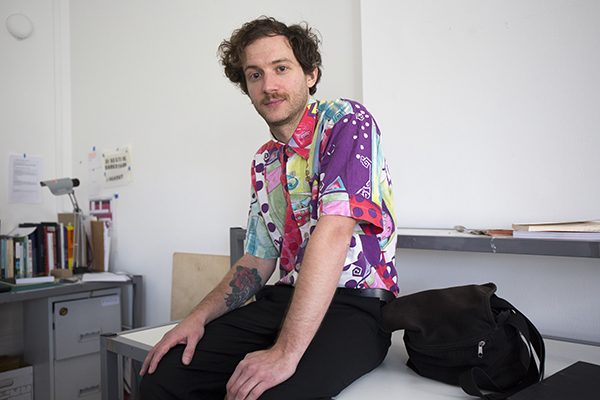Over the past year we worked with a group of students and staff at the world-renowned Royal College of Art in London to develop a series of sonic design experiments, pushing the envelope of sound design and communication.
Learning to Listen: Tomas Jefanovas
Over the past year we worked with a group of students and staff at the world-renowned Royal College of Art in London to develop a series of sonic design experiments, pushing the envelope of sound design and communication. Listen and find out more below. Check out the full collection here.
| CONTRIBUTORS |
| Photos: Clayton Cavender |
Can you tell us something about your background?
I am a graphic designer and artist working with video and sound. I am a recent Royal College of Art graduate and live in London, originally from Vilnius, Lithuania. I’ve been a graphic designer for nearly seven years, working commercially within arts, theatre, fashion and music industries. During my time at Royal College of Art 2014–16, I got interested in video art, sound, installation and performance. I’ve been developing self-initiated audio-visual art projects since. I use video and sound synthesizers and work with space to create installations and performances.
What inspires you to work with sound?
My main inspiration to work with sound is because it’s invisible, it has no physical form, therefore is very dynamic. Most of my work is visual, but when I work with sound it’s different. I do however imagine sound visually when creating a composition. It helps me to structure it.
What is the concept behind your project and how did you make it?
The concept behind this project is to reflect on church bell sounds that I recorded when in Vilnius last year. Daily bell sounds, banging on at the exact same time of the day, for a set duration, for decades, I’d assume. It made me think of ritual, repetitiveness, continuity, sustained sounds and vibrations. In response to it, I produced the sound that is a raw, very little treated and fairly primitive, ongoing, analogue synthesizer drone. Each sound layer follows the same rhythmic pattern, mirroring the pattern of the church bell. When I think of the piece visually, I see metallic and melting liquid textures, pulsing continuously, creating a sense of recurring ritual of eternal sound patterns.
What have you learnt from listening to the world more closely?
I learned that the world is extremely rich in sounds. It is multi-dimensional and vast. Good field recording can unravel so many sounds, that we don't normally hear or pay any attention to.





